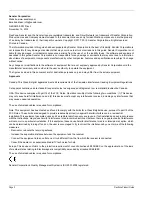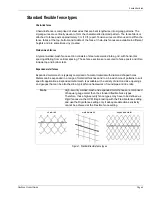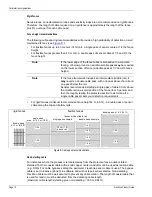
FlexZone Product Guide
Page 7
1
System planning
Introduction
The FlexZone fence protection system uses loose-tube coaxial sensor cables mounted on a fence
to detect vibrations caused by climbing, cutting, lifting, or otherwise disturbing the fence fabric.
Each FlexZone processor can monitor the activity from one or two sensor cables, each up to
300 m (984 ft.) long, and will report the alarm status of up to 60 software defined sensor zones.
FlexZone will locate the source of a disturbance to within ± 3 m (10 ft.). A single pass of sensor
cable can protect a high quality chain-link fence with no middle rail, up to 4.3 m (14 ft.) high.
Additional passes of sensor cable are recommended for chain-link fences that are higher than
4.3 m.
There are two models of the FlexZone processor available. Both models process alarm data the
same way. However, the FlexZone-4 processor supports up to 4 software defined alarm zones, but
does not report target location. The FlexZone-60 processor supports up to 60 distinct alarm zones
and reports target location.
This Product Guide covers FlexZone installation and setup for chainlink, welded-mesh, expanded
metal and palisade fences.
Installation overview
Installing a FlexZone system is a four step process:
1. Plan and design the system.
2. Inspect and if necessary, repair the fence and the surrounding area.
3. Install the sensor cable, processor and enclosure.
•
ground rod (if required)
•
alarm communication wiring
•
power supply
4. Setup and calibrate the system.








































